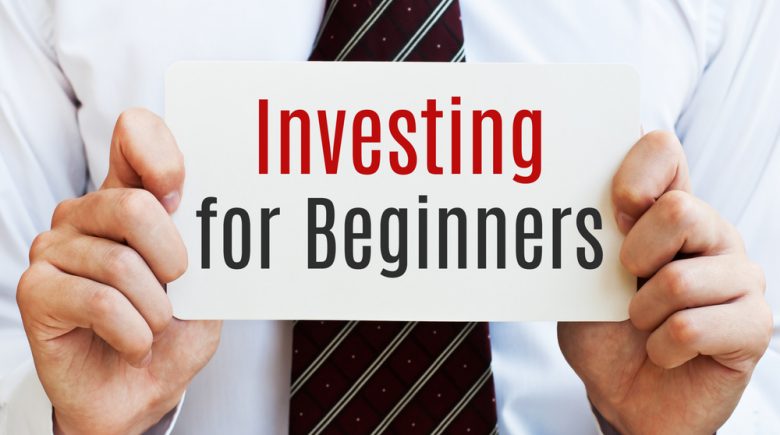You’ve heard the advice time and time and again. Investing in stocks, is overall, the most consistent and productive way to save money as well as see your investment grow.
But what is you don’t know a single thing about the stock market? Here are some basics to get you started.
What do I need first?
Buying shares of stock is buying a miniature part of the company. In the United States, there are two major exchanges dealing with stocks, the New York Stock Exchange and the National Association of Securities Dealers Automated Quotation System, commonly abbreviated as Nasdaq.
As an Individual investor, you don’t by stocks from either, but rather go to a brokerage House such as Charles Schwab, TD America or Fidelity. Here you open a brokerage account, somewhat similar to a bank account, allowing you to buy stock on the two stock exchanges. Typ1ical minimum accounts vary but for the most part, you’ll need about a $1,000 or more.
Then what?
Typically you’ll need to do a lot of research about stocks, and there is much to learn about the stock market. However, most brokerage houses provide you with a great many research reports.
After that, you’ll need to download the brokerage house’s computer platform.
Once you’ve decided to narrow in on a stock, you go onto the platform and buy some stock, of which the brokerage house uses sophisticated computers to buy your stock from the two major stock exchanges.
The brokerage house takes the money to buy the stock from your account, and also charges you a commission, which can be as much as $5 to $15 per trade online.
Let’s say a stock is valued on the stock exchange at $10 per share. If you decide to buy 25 shares of this stock, the brokerage house takes $250 out of your account, and perhaps $10 more for the commission, $235 dollars in all. For your $235 you get a an electronic confirmation of stock ownership, although you can actually request a paper certificate from the company.
What then?
In simple terms, you wait. For how long?
You can sell ownership of stock the same day, or hold onto it for several years or even several decades. If, for your $10 each you purchased shares in a booming start-up company, like Apple in 1980, your original investment would have grown to be worth close to $100,000 for an original investment of $220.
What are the downside of individual stock ownership?
In the modern age, some stocks fluctuate wildly, either up or down, Others are flat for decades. While others, like many retail at present, are just holding on to dear life.
Tou’ve got to be pretty savvy in the stock market unless you buy blue-chip stocks.
What are blue chip stocks?
According to Investopedia, a blue-chip stock is a stock in stock in a large, well-financed company that has proven itself for many years. Coca-Cola, Disney, Wal-Mart, IBM and McDonalds are examples of blue-chip stocks.
When a publicly traded corporation makes a profit, there are two ways the company can treat the profit. One way is to invest the profits in further financial enterprises, while the other way is to return some of the money to their shareholders in the form of a dividend.
Blue-chip stocks attract investors not only due to their strong management and business plan but due to the fact that they consistently offer solid dividends to their shareholders.
Diversifying your profile
Even if you are the next genius investor on Wall Street, there is one set of consistent advice from professional investors, and that is to diversify your stocks.
Even the best of companies, such as Boeing, which is currently having major problems with its newest airliner, go through rough patches, and if you are depending upon your stocks to be a sound retirement investment, you don’t want to lose it all by having
just one or two stocks in your portfolio.
How many stocks to own to be considered diversified?
There is no right answer, but from 10 to 20 stocks, located in different industries are ideal. But whether your number is 10, 20 or more, be sure to choose different industries. Don’t be like the investors in the dot.com era who were throwing money on fundamentally un-sound companies, and who lost their shirts as a result.
Mutual Funds
If keeping track of 20 stocks seems over-taxing, you might be better investing in a mutual fund. Mutual funds buy a number of stocks, thus spreading and diversifying the risk, and sell you shares of that investment.
You still need to do your fare share of research in buying a mutual fund, with a particular eye not only to the companies performance but also to the type of fees they charge. Compared to buying individual stocks, for example, the fees are much higher.
The great thing though about mutual funds is that they have sophisticated investors who do scads of research before buying any particular stock. The vast majority of universities, state retirement agencies, etc, put their money into mutual funds and make a steady and consistent rate of return.
The great thing about mutual funds is that you don.’t have to invest a lot of money. You can set up automatic buying of shares from your payroll tax, and you’ll certainly earn more, in the long run, than you’ll get from your local bank’s checking account.
The other thing that’s great is that once you’ve selected a reputable company, you can leave the worry and daily reading of the Wall Street Journal behind. Just once every month or two, check on the com companies reports. But fundamentally, it’s a “set it and forget it” type of operation.
Other Stock Investments
There are many more stock investments you can get into. For example, you can short sell, which means you are betting the price of the stock goes down. Here you borrow shares and hope to fulfill the order later at a cheaper price.
,
You can also buy and sell options on a stock, which gives you control over a block of stock for a limited time. Under the right conditions, you can sell those options later at a profit.
Finally, there is the commodities market where you can invest in wheat, gold, orange juice, and other commodities.
Whichever investment opportunity you choose, you need to fully understand the playing field before investing, but there are opportunities and even relatively safe ones at that, make your money grow.
You’ve heard the advice time and time and again. Investing in stocks, is overall, the most consistent and productive way to save money as well as see your investment grow.
But what is you don’t know a single thing about the stock market? Here are some basics to get you started.
What do I need first?
Buying shares of stock is buying a miniature part of the company. In the United States, there are two major exchanges dealing with stocks, the New York Stock Exchange and the National Association of Securities Dealers Automated Quotation System, commonly abbreviated as Nasdaq.
As an Individual investor, you don’t by stocks from either, but rather go to a brokerage House such as Charles Schwab, TD America or Fidelity. Here you open a brokerage account, somewhat similar to a bank account, allowing you to buy stock on the two stock exchanges. Typ1ical minimum accounts vary but for the most part, you’ll need about a $1,000 or more.
Then what?
Typically you’ll need to do a lot of research about stocks, and there is much to learn about the stock market. However, most brokerage houses provide you with a great many research reports.
After that, you’ll need to download the brokerage house’s computer platform.
Once you’ve decided to narrow in on a stock, you go onto the platform and buy some stock, of which the brokerage house uses sophisticated computers to buy your stock from the two major stock exchanges.
The brokerage house takes the money to buy the stock from your account, and also charges you a commission, which can be as much as $5 to $15 per trade online.
Let’s say a stock is valued on the stock exchange at $10 per share. If you decide to buy 25 shares of this stock, the brokerage house takes $250 out of your account, and perhaps $10 more for the commission, $235 dollars in all. For your $235 you get a an electronic confirmation of stock ownership, although you can actually request a paper certificate from the company.
What then?
In simple terms, you wait. For how long?
You can sell ownership of stock the same day, or hold onto it for several years or even several decades. If, for your $10 each you purchased shares in a booming start-up company, like Apple in 1980, your original investment would have grown to be worth close to $100,000 for an original investment of $220.
What are the downside of individual stock ownership?
In the modern age, some stocks fluctuate wildly, either up or down, Others are flat for decades. While others, like many retail at present, are just holding on to dear life.
Tou’ve got to be pretty savvy in the stock market unless you buy blue-chip stocks.
What are blue chip stocks?
According to Investopedia, a blue-chip stock is a stock in stock in a large, well-financed company that has proven itself for many years. Coca-Cola, Disney, Wal-Mart, IBM and McDonalds are examples of blue-chip stocks.
When a publicly traded corporation makes a profit, there are two ways the company can treat the profit. One way is to invest the profits in further financial enterprises, while the other way is to return some of the money to their shareholders in the form of a dividend.
Blue-chip stocks attract investors not only due to their strong management and business plan but due to the fact that they consistently offer solid dividends to their shareholders.
Diversifying your profile
Even if you are the next genius investor on Wall Street, there is one set of consistent advice from professional investors, and that is to diversify your stocks.
Even the best of companies, such as Boeing, which is currently having major problems with its newest airliner, go through rough patches, and if you are depending upon your stocks to be a sound retirement investment, you don’t want to lose it all by having
just one or two stocks in your portfolio.
How many stocks to own to be considered diversified?
There is no right answer, but from 10 to 20 stocks, located in different industries are ideal. But whether your number is 10, 20 or more, be sure to choose different industries. Don’t be like the investors in the dot.com era who were throwing money on fundamentally un-sound companies, and who lost their shirts as a result.
Mutual Funds
If keeping track of 20 stocks seems over-taxing, you might be better investing in a mutual fund. Mutual funds buy a number of stocks, thus spreading and diversifying the risk, and sell you shares of that investment.
You still need to do your fare share of research in buying a mutual fund, with a particular eye not only to the companies performance but also to the type of fees they charge. Compared to buying individual stocks, for example, the fees are much higher.
The great thing though about mutual funds is that they have sophisticated investors who do scads of research before buying any particular stock. The vast majority of universities, state retirement agencies, etc, put their money into mutual funds and make a steady and consistent rate of return.
The great thing about mutual funds is that you don.’t have to invest a lot of money. You can set up automatic buying of shares from your payroll tax, and you’ll certainly earn more, in the long run, than you’ll get from your local bank’s checking account.
The other thing that’s great is that once you’ve selected a reputable company, you can leave the worry and daily reading of the Wall Street Journal behind. Just once every month or two, check on the com companies reports. But fundamentally, it’s a “set it and forget it” type of operation.
Other Stock Investments
There are many more stock investments you can get into. For example, you can short sell, which means you are betting the price of the stock goes down. Here you borrow shares and hope to fulfill the order later at a cheaper price.
,
You can also buy and sell options on a stock, which gives you control over a block of stock for a limited time. Under the right conditions, you can sell those options later at a profit.
Finally, there is the commodities market where you can invest in wheat, gold, orange juice, and other commodities.
Whichever investment opportunity you choose, you need to fully understand the playing field before investing, but there are opportunities and even relatively safe ones at that, make your money grow.



